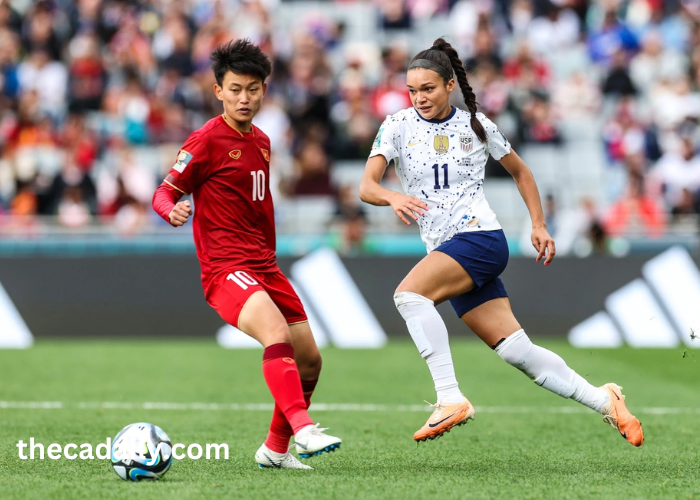Women’s soccer has experienced a remarkable transformation over the past few decades, evolving from a marginalized sport into a global phenomenon. This journey has been marked by significant milestones, breaking barriers, and setting records that have reshaped the landscape of sports and inspired millions worldwide. Discover the excitement of Babaijebu, a premier website offering a wide range of gaming options. Play and win big with our thrilling games today!
Early Struggles and Barriers
The history of women’s soccer is replete with challenges and obstacles. In the early 20th century, women’s soccer faced societal prejudices and institutional restrictions. For instance, in 1921, the English Football Association banned women from playing on their affiliated pitches, a prohibition that lasted for 50 years. Similar restrictions were prevalent in other countries, stifling the growth of the sport.
Despite these challenges, women continued to play soccer, often in informal settings or unsanctioned leagues. The persistence of these early pioneers laid the groundwork for future generations. The formation of the Women’s Football Association in the UK in 1969 and the lifting of the FA’s ban in 1971 were pivotal moments, signaling the beginning of a new era for women’s soccer.
The Growth of Women’s Soccer
The late 20th and early 21st centuries witnessed a significant growth in women’s soccer, driven by increased visibility and support. The inaugural FIFA Women’s World Cup in 1991, held in China, marked a turning point. The tournament showcased the talent and potential of women soccer players, attracting global attention and setting the stage for future growth.
Subsequent World Cups, particularly the 1999 tournament in the United States, further propelled the sport into the limelight. The iconic image of Brandi Chastain celebrating her winning penalty kick in the final became a symbol of empowerment and progress. The tournament’s success demonstrated that there was a substantial audience for women’s soccer, leading to increased media coverage and sponsorship deals.
Breaking Records
In recent years, women’s soccer has continued to break records and achieve new heights. The 2019 FIFA Women’s World Cup in France was a landmark event, drawing over 1 billion viewers worldwide. The final match between the United States and the Netherlands attracted 82 million viewers, making it one of the most-watched soccer matches in history.
On the field, players have set new standards of excellence. The U.S. Women’s National Team (USWNT), in particular, has been a dominant force, winning four World Cup titles and four Olympic gold medals. Players like Mia Hamm, Abby Wambach, and more recently, Megan Rapinoe and Alex Morgan, have become household names, inspiring young athletes around the world.
Club soccer has also seen tremendous growth. The establishment of professional leagues, such as the National Women’s Soccer League (NWSL) in the United States and the Women’s Super League (WSL) in England, has provided more opportunities for women to play soccer at a high level. These leagues have attracted top talent from around the globe, raising the standard of play and increasing the sport’s popularity.
Social Impact and Future Prospects
The rise of women’s soccer has had a profound social impact. It has challenged traditional gender norms and provided a platform for women to showcase their athleticism and leadership. The success of women’s soccer teams has also spurred conversations about gender equality in sports, leading to calls for equal pay and better working conditions for female athletes.
The USWNT’s legal battle for equal pay has been a focal point in this movement. In 2019, the team filed a lawsuit against the U.S. Soccer Federation, demanding equal compensation to their male counterparts. The case garnered widespread support and highlighted the broader issue of gender disparity in sports.
Looking ahead, the future of women’s soccer appears bright. Increased investment in youth development programs, improved infrastructure, and greater media coverage are expected to drive further growth. The inclusion of women’s soccer in major sporting events, such as the Olympics and continental championships, will continue to boost its visibility.
Moreover, the expansion of professional leagues and the growing popularity of the sport at the grassroots level will ensure a steady pipeline of talent. As more countries invest in women’s soccer, the level of competition will rise, leading to even more thrilling and high-quality matches.
Conclusion
The rise of women’s soccer is a testament to the resilience and determination of female athletes who have fought for recognition and respect. By breaking barriers and setting records, they have transformed the sport and inspired a new generation of players and fans. As the journey continues, the world can look forward to even more milestones and achievements in women’s soccer, celebrating the spirit of equality and the joy of the beautiful game.


